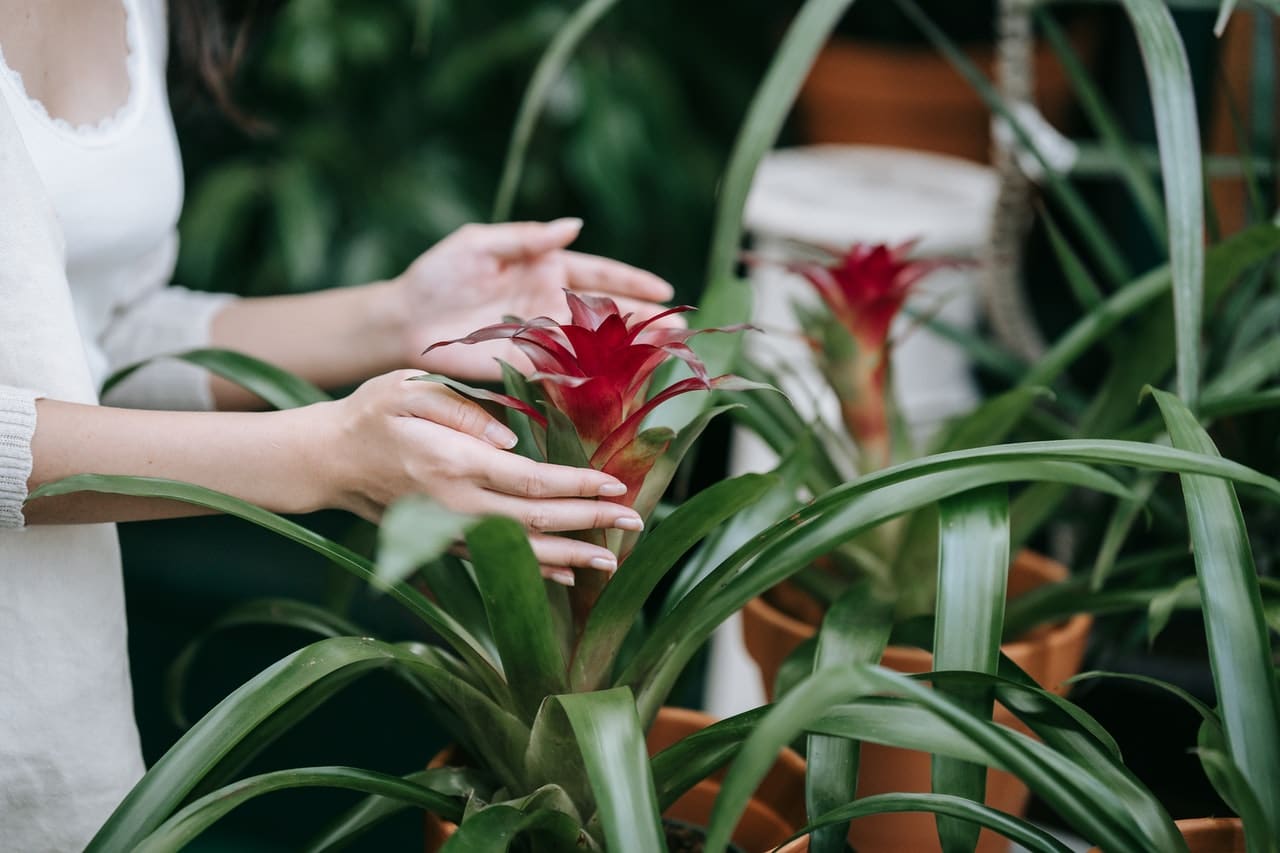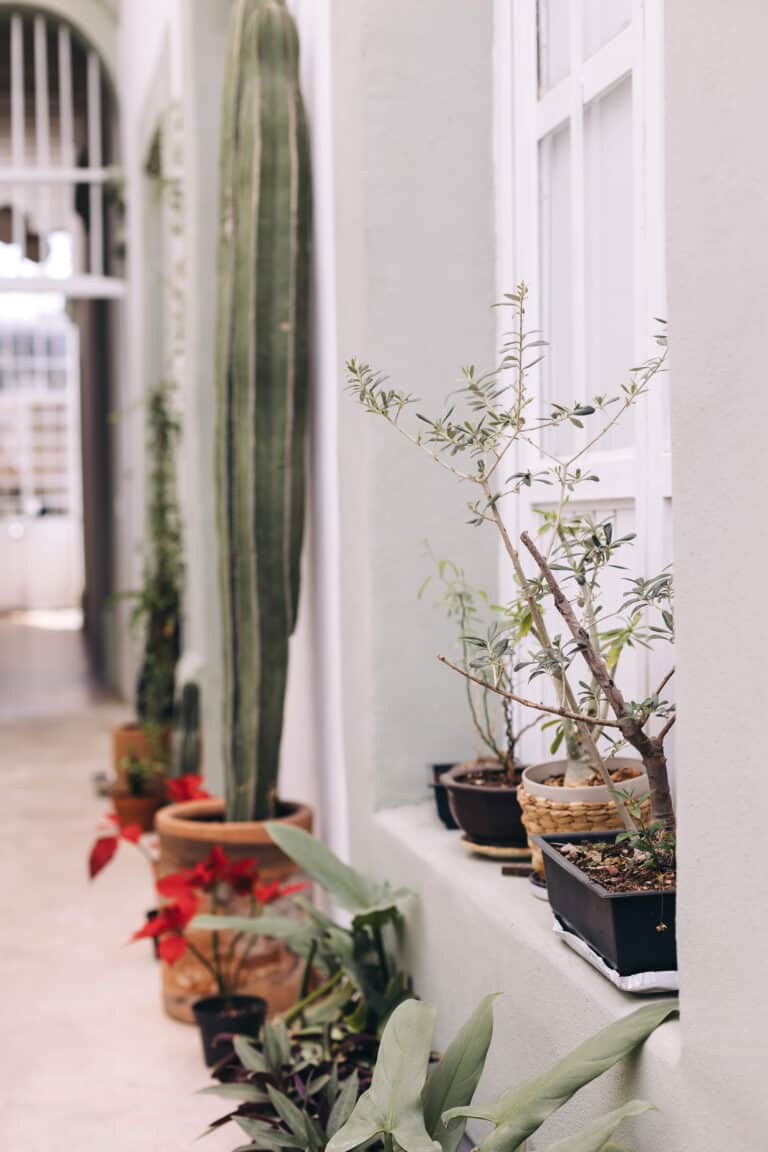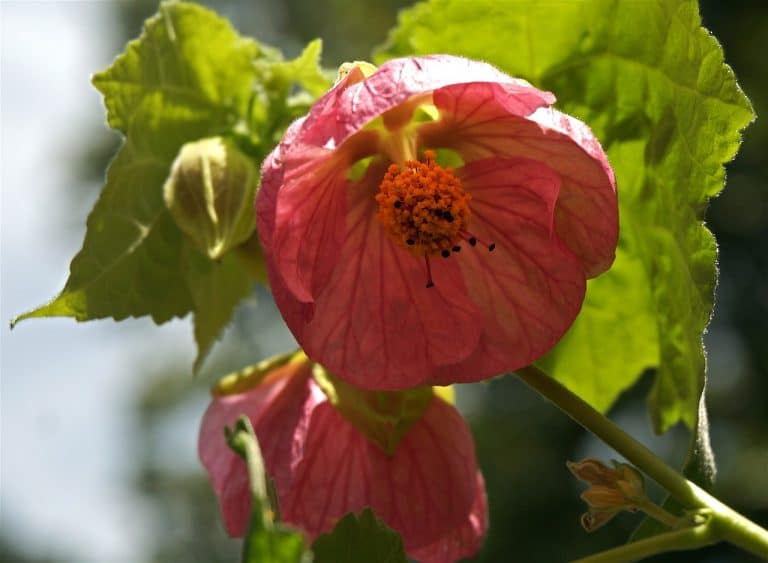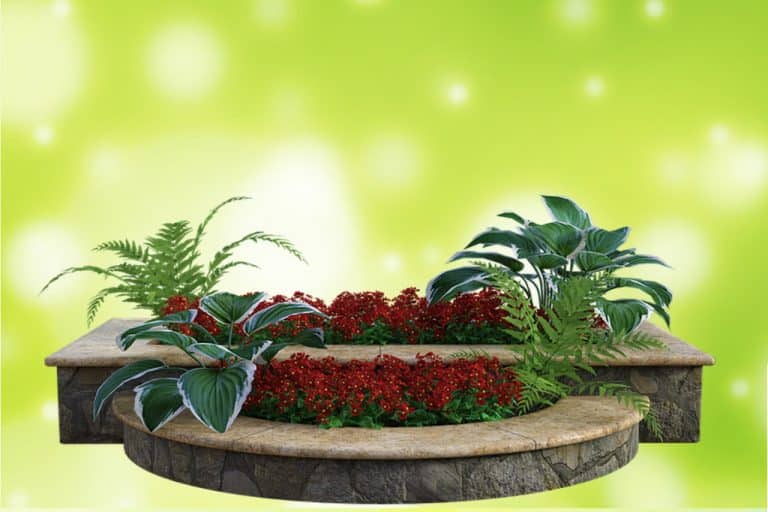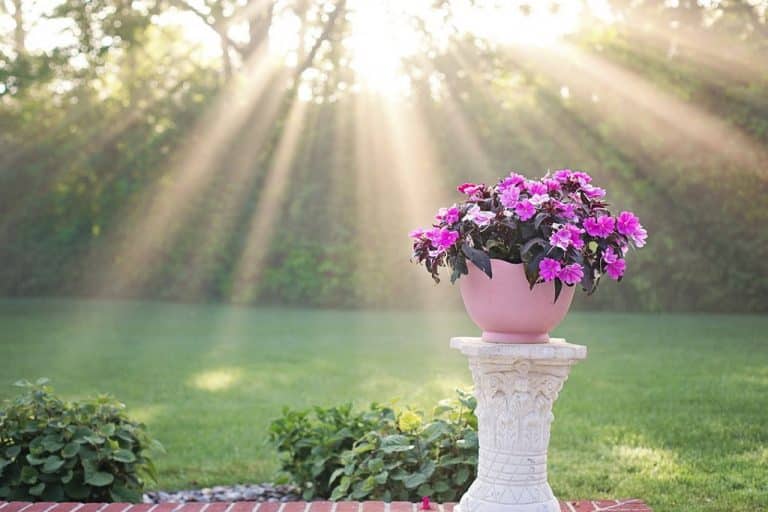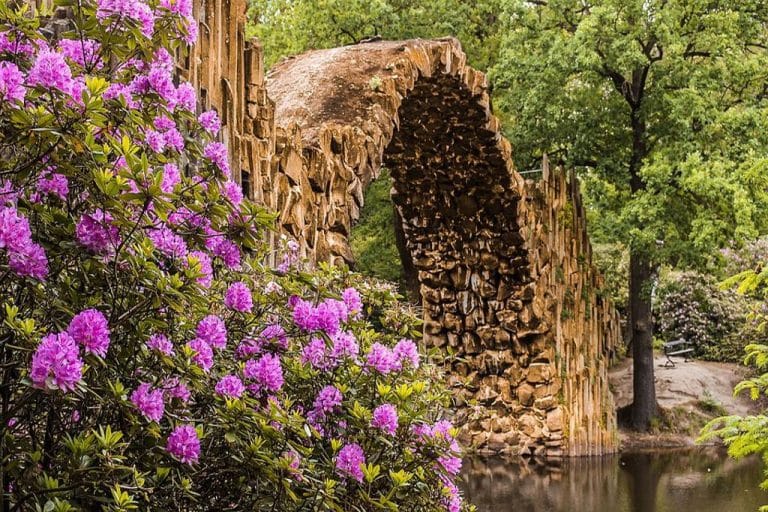Getting to Know Eight Beautiful Bromeliads
In the following pages, eight of the most popular, easy-to-grow bromeliads are described in detail. They are listed in alphabetical order by botanical name, but you may not know a bromeliad’s botanical name if you bought it without benefit of an identification tag.
This chart will help you identify which bromeliad you have, so that you can then turn to the appropriate plant profile to get to know your bromeliad better.

FAMILY: BROMELIACEAE ORIGIN: BRAZIL
URN PLANT, SILVER VASE PLANT
THE STIFF, UPRIGHT SHAPE OF URN PLANT serves it well in its natural habitat — the floor of South American rain forests. The tough, arching leaves have a waxy finish, which helps the plant gather water in its reservoir.
Individual leaves can grow to 15 in/37.5 cm long, and well-grown plants may reach 20 in/50 cm in height. Mature plants produce a quilled, pinkish orange bract that persists for 4 to 6 weeks.
If a 4-year-old plant shows no signs of blooming, try pushing it along with Epsom salts and ethylene gas released by fresh fruit
Spring is the best season to induce bloom; bright light also promotes flowering. After flowering, urn plant usually produces two to three pups.

SPECIFICATIONS
Light: Bright light from an east or west window.
Temperature: In summer, plants enjoy moving outdoors, provided temperatures range between 70–85°F/21–30°C. In fall, winter and early spring, average room temperatures (65–75°F/18–24°C).
Fertilizer: In summer, feed monthly with a liquid plant food mixed at half the normal strength. Spray it on the leaves, fill the reservoir at least 1 in/2.5 cm deep, and also fertilize the roots. In winter, feed plants every other month.
Water: Replenish water in the reservoir when it dries out, at least every 10 days. Lightly water the roots weekly in summer, less often in winter. Do not allow the roots to dry out completely in any season.
Soil: Orchid potting soil or a bromeliad mix.
Repotting: Repot young plants annually in spring until they fill an 8-inch pot.
Longevity: Plants mature in 3 to 4 years.
Propagation: Divide and repot offsets when they are 4 to 6 months old and at least 6 in/15 cm tall.
Selections: In addition to the green-leafed form, ‘Purpurea’ features leaves blushed with maroon, and ‘Variegata’ has creamy longitudinal stripes on the leaves.
Display tips: Grow urn plant in its own pot near plants with lush green foliage, such as ferns or flowering houseplants that need abundant light. Young pups can be mounted on a piece of wood for one season.
FAMILY: BROMELIACEAE ORIGIN: BRAZIL AND PARAGUAY
IVORY PINEAPPLE, VARIEGATED PINEAPPLE
with creamy margins studded with sharp spines. Plants can get quite large, to 36 in/90 cm tall and 6 ft/1.8 m across, but keeping them in 8 in/20 cm pots helps to control their size.
Plants that are 5 to 6 years old produce a pinkish fruiting spike that slowly grows into a small brown pineapple over a period of 3 months. Although it lacks the sweet flavor of cultivated pineapples, which grow in hot sun, it is fun to watch as it matures.
Potted pineapples benefit from strong light and warm temperatures, so it is best to move them outdoors in summer. Gradually accustom the plants to increased light.
Move the plants back indoors when nights begin to cool in the fall, and then place them in a very warm, brightly lit location.

SPECIFICATIONS
Light: In summer, move plant outdoors to partial sun. In fall, winter and early spring, a half day of direct light from an east or west window.
Temperature: In winter, warm (above 65°F/18°C). In summer, very warm (to 85°F/29°C).
Fertilizer: From late spring through summer, feed plant every 2 weeks with liquid plant food mixed at half the normal strength. In winter, feed monthly.
Water: In summer, provide moisture by thoroughly spraying the leaves with water twice weekly. Also water the roots when the top half of the soil becomes dry.
In winter, plants kept indoors need less water due to lower temperatures and less sun. Use similar practices about once a week.
Soil: Orchid potting mix or African violet soil. This bromeliad needs a heavier soil than most other species.
Repotting: Every 2 years in spring. When repotting, do not press the soil down, as this plant likes a little air around its roots. Wear gloves and long sleeves when handling this spiny plant.
Longevity: Individual plants live 5 to 6 years.
Propagation: If the plant produces a fruit, cut off its top when the leaves in the rosette are 4 in/10 cm long, allow it to dry for a day, and then pot it in a lightly dampened mixture of peat moss and sand.
You also can pot up offsets that emerge after the parent plant begins to die.
Selections: You can grow a regular pineapple by cutting off the top and rooting it, but the variegated form makes a much more attractive houseplant.
Display tips: This plant needs plenty of room and abundant sun. It makes a good floor plant in rooms with large windows, particularly when grown in close company with tropical-looking palms.
FAMILY: BROMELIACEAE ORIGIN: ARGENTINA AND BRAZI
QUEEN’S TEARS, FRIENDSHIP PLANT
POPULAR AND EASY TO GROW, queen’s tears gets its name from the tendency of the flowers to weep droplets of nectar. It is also a willing producer of offsets, which can be shared among friends, hence its other common name, friendship plant.
Young plants grow into upright rosettes. As the leaves age, they arch outward. Mature plants are typically 16 in/40 cm tall and up to 30 in/75 cm wide.
Plants bloom when they are 2 to 3 years old, usually in spring, bearing pendant red or pink bracts with green, purple, or yellow flowers inside.
Too much light can make the leaves take on a reddish cast, but increased light levels available outdoors in summer encourage mature plants to bloom the following spring.
This bromeliad tolerates dry indoor air better than others, but still benefits from being kept in a spot where it can be misted often to increase humidity.

SPECIFICATIONS
Light: In summer, partial shade outdoors. In fall, winter and early spring, bright light from an east or west window.
Temperature: In summer, enjoys warm temperatures outdoors (65–80°F/18–27°C). In fall, winter and early spring, cool to average room temperatures (60–75°F/16–24°C); can tolerate brief winter chilling to 40°F/4°C.
Fertilizer: In spring and summer, feed leaves and roots with houseplant fertilizer mixed at half the normal strength every two weeks. In fall and winter, feed monthly.
Water: In spring and summer, water the leaves, reservoir, and roots as needed to keep the cups filled and roots lightly moist. In fall and winter, keep slightly dry to reduce problems with root rot.
Soil: Bromeliad mix or orchid potting soil.
Repotting: Annually in spring until plant fills a 5 in/12.5 cm pot. Then wait until after flowering to repot offsets.
Longevity: Individual plants usually live for 3 years.
Propagation: When parent plant fails after flowering, use a sharp-tipped knife to cut it off at the soil line. Repot pups when they are about 6 in/15 cm tall.
Selections: This plant is usually sold by species or common name. Buy plants that have not yet produced flowers.
Display tips: Grow in a hanging basket or suspended pot at eye level, where the arching leaves and pendant flowers can be seen up close.
FAMILY: BROMELIACEAE ORIGIN: BRAZIL
EARTH STAR, STARFISH PLANT
A SMALL BROMELIAD, earth star is an excellent choice for humid rooms where space is limited. Mature plants are only 5 in/12.5 cm high and 6 in/15 cm across.
Unlike other bromeliads, earth star’s flowers are small and hidden, so it is grown primarily for its starry, sharp-tipped wavy leaves.
The coarse leaf scales are easily seen on most cultivars, and they do a good job of absorbing moisture and nutrients. Strong light intensifies the leaf colors of pink or variegated earth stars.
Older plants often flatten out a bit before they bloom, and then slowly fail. Use scissors to trim back the leaves by half their length, which speeds the growth of the emerging offsets.
Because of its small size, earth star is the preferred bromeliad for growing in homes. Its unique texture brings surprising drama when earth star is grouped with ferns and other foliage plants that like high humidity.

SPECIFICATIONS
Light: Bright light from an east or west window.
Temperature: Warm (60–80°F/16–27°C) year-round.
Fertilizer: In spring and summer, spray leaves monthly with a houseplant fertilizer mixed at half the normal strength. In fall and winter, feed every other month.
Water: In spring and summer, water as often as needed to keep the roots lightly moist. In fall and winter, water less often, but do not allow the roots to dry out completely.
Soil: Regular potting soil amended with one-third part peat moss, or use orchid potting soil.
Repotting: Repot every 2 to 3 years in spring, handling the plant gently to avoid injuring its sparse, shallow roots. This plant does well in a broad container.
Longevity: Up to 10 years, or indefinitely when propagated from offsets.
Propagation: Cut away pups and repot them when they are half the size of the parent plant. Keep newly potted pups in a warm place, enclosed in a loose plastic bag for a month to increase humidity.
Selections: Some earth stars feature all-green leaves, while others have red, pink, and green longitudinal stripes. ‘Areltey’ is quite pink, with gray-green stripes down the center of each leaf.
‘Black Mystic’, also known as ‘Black Magic’, has leaves mottled with irregular zebralike dark bands. A unique earth star, C. sinuosus ‘Cascade’, produces pups on long stolons, reminiscent of a spider plant.
Display tips: Young plants make good additions to terrariums. Older plants grown in pots are ideal for low windowsills, where they can easily be viewed from above.
FAMILY: BROMELIACEAE ORIGIN: CENTRAL AND SOUTH AMERICA
SCARLET STAR
MANY OLDER STRAINS OF SCARLET STAR grew quite tall, but most modern named varieties are smaller, reaching a mature size of 10 in/25 cm tall and 12 in/30 cm wide.
This bromeliad has a rather upright posture, and its glossy green leaves add to its appeal. A flamboyant bloomer, in its third or fourth year scarlet star produces a brightly colored quilled spike, which emerges just above the foliage in the plant’s center.
As the flower spike fades, usually 6 or more weeks after it appears, pups emerge from near the base of the plant. Although scarlet star appreciates high humidity, it is less demanding of light than other bromeliads, and often grows beautifully in the bright artificial light of offices.

SPECIFICATIONS
Light: Moderate to bright year-round, with no direct sun; grows well with bright fluorescent light.
Temperature: Average to warm (65–80°F/18–27°C) year-round.
Fertilizer: Feed monthly year-round with a houseplant fertilizer mixed at half the normal strength. Feed leaves, roots, and reservoir.
Water: Keep cup filled with at least 1 in/2.5 cm of water, and dribble enough water to the roots to keep them lightly moist. Empty old water from cup every 2 to 3 weeks and promptly replace it. Leach pots once during the summer to remove accumulated salts.
Soil: Bromeliad or orchid potting soil.
Repotting: Repot annually in spring until plant fills a 6 in/15 cm pot. Small pots help induce blooming in mature plants.
Longevity: Individual plants live 3 to 4 years.
Propagation: Remove offsets and pot them up when they are at least 3 in/7.5 cm tall. Maintain high humidity for a month after potting up the pups.
Selections: There are numerous named varieties. The most popular is ‘Luna’, which produces a mauve spike. Others bloom yellow, red, or pinkish lavender. Varieties with reddish leaf markings often are not as vigorous as green-leafed selections.
Display tips: The handsome glossy leaves are spineless, so this bromeliad poses no danger when placed near activity areas. Moving a blooming plant to slightly lower light helps to intensify the color of the bracts.
FAMILY: BROMELIACEAE ORIGIN: BRAZIL
BLUSHING BROMELIAD, CARTWHEEL PLANT
BLUSHING BROMELIAD GETS ITS NAME from the way the leaves in the center of the plant turn bright red as the plant begins to flower.
The blossom itself is not showy and stays nestled deep in the crown. However, the colored vase persists for a few months, until the parent plant dies back and makes way for three or more new offsets.
Full-sized blushing bromeliads, sometimes called “neos,” become broad, flat-topped plants, 25 in/62.5 cm wide and 12 in/30 cm tall, and plants of any size need abundant warmth and humidity.
To grow well, they must feel convinced that they are in a jungle, yet they also need abundant sun. This bromeliad is therefore not for everyone, but is a good choice if you have a bright sunroom that is kept humid at all times.

SPECIFICATIONS
Light: Bright light with a half day of direct sun year-round. Responds well to being grown in a sunny yet humid place outdoors in summer.
Temperature: Average to warm room temperatures (65–80°F/18–27°C), with no chilling below 50°F/10°C.
Fertilizer: Feed monthly with a high-phosphorous (low-nitrogen) fertilizer mixed at half the normal strength. Feed the leaves, roots, and reservoir.
Water: Keep roots lightly moist, and replenish water in reservoir every 10 days, or more often in summer. This bromeliad grows best in high humidity, above 50 percent.
Soil: Potting soil amended with one-third part peat moss, or African violet soil.
Repotting: Repot annually in spring until plant fills a 5 in/12.5 cm pot.
Longevity: Individual plants live 3 to 4 years.
Propagation: Wait until the parent plant dies back to pot up offsets, which often have very skimpy roots. Keeping newly potted offsets in a warm, humid enclosure, such as a roomy plastic bag, speeds the rooting process.
Selections: There are numerous named varieties, most of which have cream stripes in their leaves. ‘Martin’ is quite vigorous, as is the slightly smaller ‘Compacta’.
Display tips: Because of its large, spreading shape, this bromeliad needs plenty of space. It is at its best when viewed from above.
FAMILY: BROMELIACEAE ORIGIN: CENTRAL AND SOUTH AMERICA
AIR PLANT, SKY PLANT
TILLANDSIA BROMELIADS are the rootless wonders of the plant world. Some species do have roots, but these are used primarily to anchor the plants in place.
Tillandsias take up moisture and nutrients through the leaves, and only one species, T. cyanea (pink quill), can be grown in a pot. Others can be pinned, tied, or even glued onto a mount, such as a gnarled piece of wood or a seashell.
All are small plants with thin, gray-green leaves that seldom spread more than 6 in/15 cm high and wide. Like other bromeliads, tillandsias bloom and then produce offsets.
Giving them a cool winter rest increases the probability that mature plants will bloom. Most tillandsias reach maturity in 3 to 5 years.

SPECIFICATIONS
Light: Bright light from an east or west window, with some direct sun in winter but not in summer.
Temperature: In spring, summer and early fall, warm (to 80°F/27°C). In winter, a cool rest in the 60°F/16°C range.
Fertilizer: In spring and summer, feed plants every 2 weeks by spraying them with a high-phosphorous fertilizer, mixed at half the normal strength. Plants take up the nutrients with their leaf scales. In fall and winter, no feeding is needed.
Water: Spray plants with water twice weekly, until they are thoroughly wet. The applied water should dry within 4 hours. Do not soak the base of the plants.
Soil: None needed for most selections. A bit of sphagnum moss can be used to create a nest for air plants. Grow pink quill in orchid soil.
Repotting: Reposition as needed to accommodate new growth, usually only every 2 to 3 years.
Longevity: Individual plants live 5 years or more.
Propagation: Detach offsets when they are one-third the size of the parent plant. Small holes drilled in an old piece of untreated wood make a good temporary home for these babies.
Selections: Pink quill can be grown as an individual specimen in a pot. Most other air plants are sold by common name, or may be labeled as T. ionantha. Spanish moss is T. usneoides.
Display tips: Use a rasp to create crevices or depressions in a nicely figured knot of wood and install three air plants to create a tree garden.
FAMILY: BROMELIACEAE ORIGIN: TROPICAL AMERICA
FLAMING SWORD, PAINTED FEATHER, ZEBRA BROMELIAD
ONE OF THE SHOWIEST BROMELIADS, flaming sword features stiff, arching leaves banded with maroon, which form a tight vase in the center. Mature plants grow 20 in/50 cm tall and 24 in/60 cm wide.
Flaming sword is not as easy to grow as some other bromeliads, but it will succeed when provided with bright light, warm temperatures, and moderate to high humidity.
If all goes well, a 3- to 4-year-old plant will reward you with a tall, flattened flower spike, which is usually bright red, with small yellow flowers emerging from the bracts.
The spike persists for several weeks, after which the plant slowly declines while producing one or more offsets. Wait until the parent plant is quite far gone to propagate a new plant from the pup.

SPECIFICATIONS
Light: Bright indirect light year-round, with some direct sun in winter.
Temperature: Warm (70–80°F/21–27°C) year-round.
Fertilizer: Feed monthly with an all-purpose houseplant fertilizer mixed at half the normal strength. Feed the leaves, roots, and reservoir.
Water: Keep soil lightly moist at all times, and refill reservoir every 2 weeks with fresh water. Mist weekly, and keep in a humid room.
Soil: Bromeliad mix or orchid potting soil.
Repotting: Repot young plants after 2 years, and limit pot size for mature plants to 6 in/15 cm.
Longevity: Individual plants live for 3 to 4 years.
Propagation: After flowering, this bromeliad usually produces one robust pup. Allow it to grow until it is at least 8 in/20 cm tall before detaching it, potting it up, and discarding the parent plant.
Selections: There are many named varieties, which vary in leaf variegation and the shade of the flowering spike. Purchase plants that have not yet bloomed, or have just begun to produce a flowering spike.
Display tips: The dramatic leaf colors make this plant a strong focal point even when it is not in bloom. Because of its width, it is a good plant to display on a raised platform, with smaller ferns or other low-light plants beneath it.

